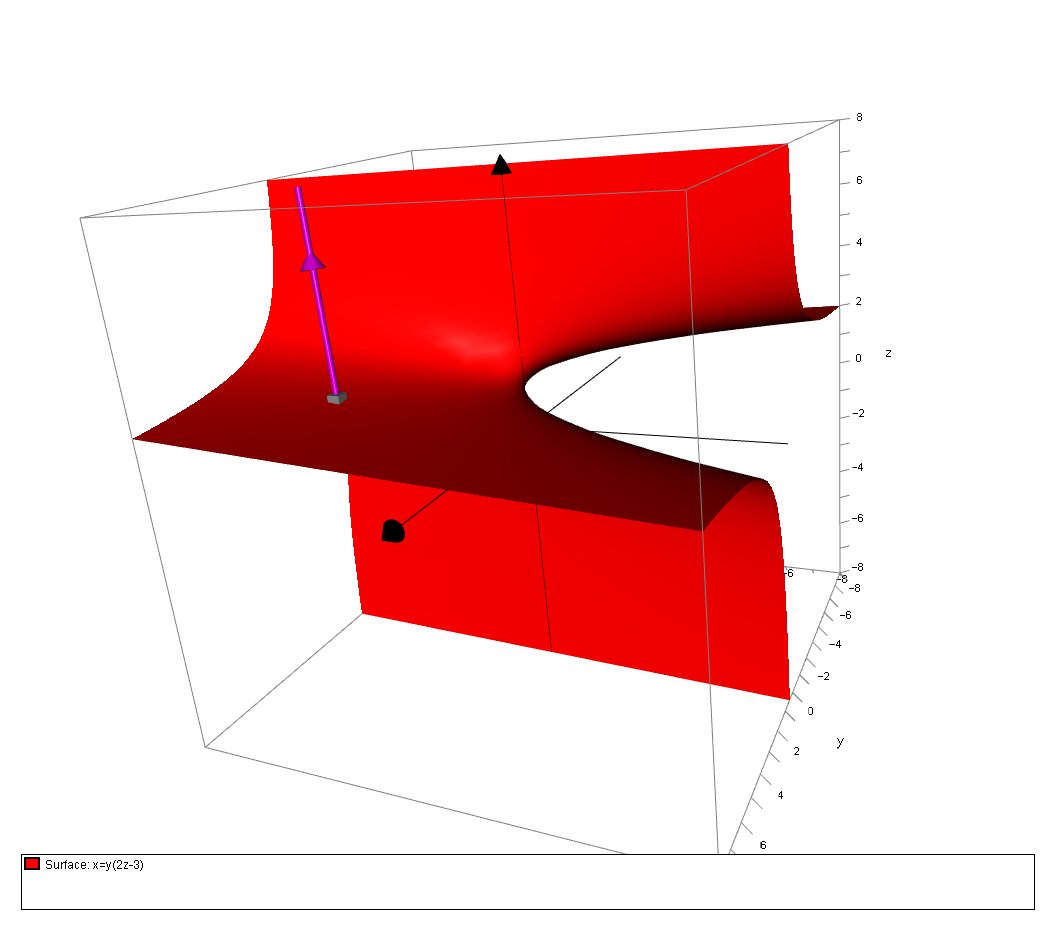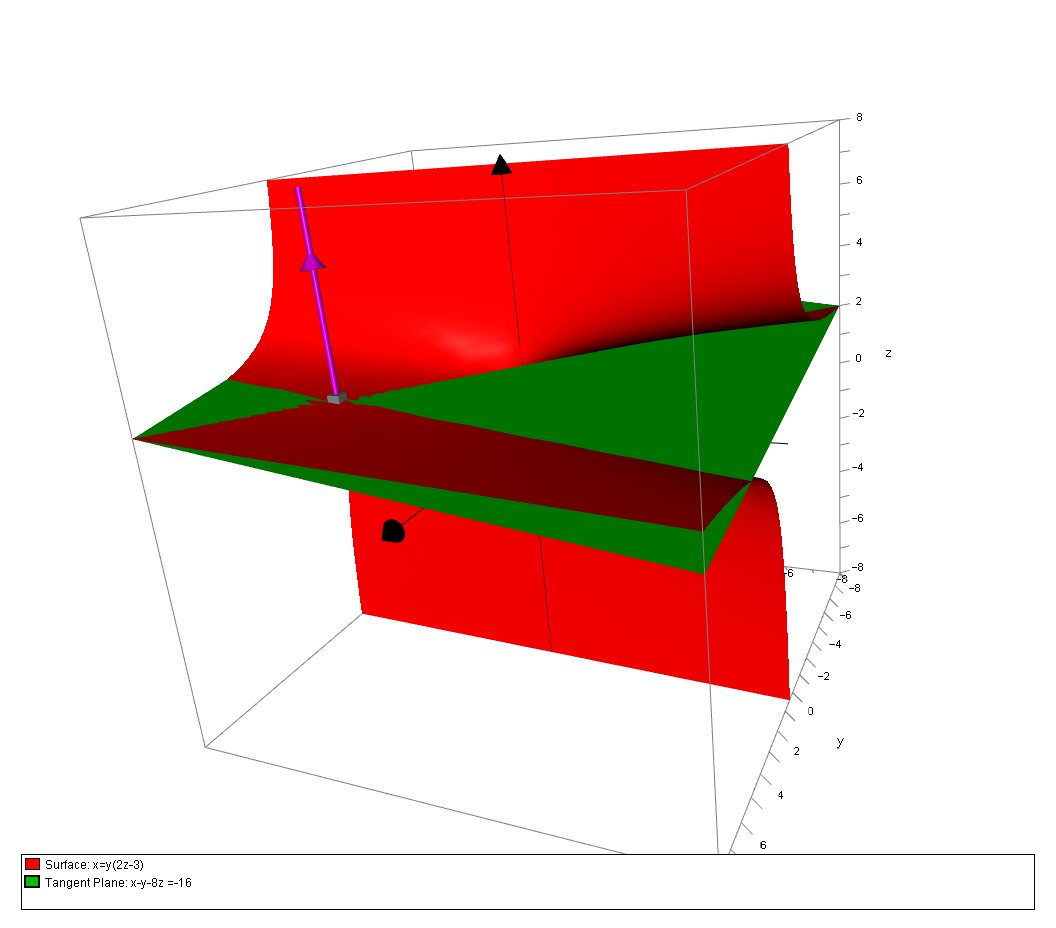How do you find the equations for the tangent plane to the surface #x=y(2z-3)# through #(4, 4, 2)#?
1 Answer
Explanation:
First we rearrange the equation of the surface into the form
# x=y(2z-3) #
# :. x=2yz-3y #
# :. x+3y-2yz = 0 #
And so we have our function:
# f(x,y,z) = x+3y-2yz #
In order to find the normal at any particular point in vector space we use the Del, or gradient operator:
# grad f(x,y,z) = (partial f)/(partial x) hat(i) + (partial f)/(partial y) hat(j) + (partial f)/(partial z) hat(k) #
remember when partially differentiating that we differentiate wrt the variable in question whilst treating the other variables as constant. And so:
# grad f = ((partial)/(partial x) (x+3y-2yz))hat(i) + #
# " " ((partial)/(partial y) (x+3y-2yz))hat(j) + #
# " " ((partial)/(partial z) (x+3y-2yz))hat(k) #
# " "= (1)hat(i) + (3-2z)hat(j) + (-2y)hat(k) #
# " "= hat(i) + (3-2z)hat(j) -(2y)hat(k) #
So for the particular point
# grad f(4,4,2) = hat(i) + (3-2*2)hat(j) -(2*4)hat(k) #
# " " = hat(i) -hat(j) -8hat(k) #
# " " = ( (1), (-1),(-8) ) #
So the tangent plane to the surface
# vec r * vec n = vec a * vec n #
Where
Hence, the tangent plane equation is:
# ((x),(y),(z)) * ( (1), (-1),(-8) ) = ((4),(4),(2)) * ( (1), (-1),(-8) ) #
# :. (x)(1) + (y)(-1) + (z)(-8) = (4)(1) + (4)(-1) + (2)(-8) #
# :. x-y-8z = 4-4-16 #
# :. x-y-8z =-16 #
We can confirm this graphically: Here is the surface with the normal vector:

and here is the surface with the tangent plane and the normal vector:


